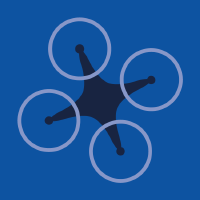Topic Editors








Hyperspectral Imaging and Signal Processing

Topic Information
Dear Colleagues,
Hyperspectral imaging technology has been used for Earth observation for more than four decades. A variety of hyperspectral sensors based on different platforms, such as satellites, aircraft, drones, cars, and ground, have been developed, which have greatly promoted the applications of hyperspectral imaging technology. With the development of computer science and the availability of hyperspectral datasets, more and more artificial intelligence algorithms based on machine learning or deep learning are used for the processing and application of hyperspectral imagery. In addition, some potential applications using hyperspectral imaging technology are investigated with the improvement of the spatial and spectral resolution of hyperspectral sensors. In this Topic, we focus on hyperspectral sensor design, data processing, and applications. Authors are encouraged to submit contributions that report original studies on hyperspectral imaging and signal processing. If your research is limited by spaceborne hyperspectral images, you can contact the Topic editor team to seek data support. Topics will include but not be limited to:
- Hyperspectral sensor design, development, and performance valuation;
- Key techniques in sub-systems, including optics, electronics, mechanics, and detectors;
- Hyperspectral data preprocessing and image quality improvement, e.g., radiometric calibration, geometric correction, and atmosphere correction;
- Innovative algorithm development for hyperspectral remote sensing;
- Data fusion of multiple remote sensing sources;
- Hyperspectral LiDAR;
- Hyperspectral applications in the ocean, forests, agriculture, environment, minerals and oil, etc.
Prof. Dr. Yinnian Liu
Prof. Dr. Bing Zhang
Prof. Dr. Liangpei Zhang
Dr. Chenchao Xiao
Prof. Dr. Yueming Wang
Prof. Dr. Yongguang Zhang
Prof. Dr. Qingli Li
Dr. Yuwei Chen
Dr. Jianxin Jia
Dr. Mingyang Zhang
Topic Editors
Keywords
- hyperspectral remote sensing
- data processing
- radiometric and geometric calibration
- machine learning and deep learning
- data fusion
- land cover mapping
Participating Journals
| Journal Name | Impact Factor | CiteScore | Launched Year | First Decision (median) | APC | |
|---|---|---|---|---|---|---|

Drones
|
4.8 | 6.1 | 2017 | 17.9 Days | CHF 2600 | Submit |

Electronics
|
2.9 | 4.7 | 2012 | 15.6 Days | CHF 2400 | Submit |

Land
|
3.9 | 3.7 | 2012 | 14.8 Days | CHF 2600 | Submit |

Photonics
|
2.4 | 2.3 | 2014 | 15.5 Days | CHF 2400 | Submit |

Remote Sensing
|
5.0 | 7.9 | 2009 | 23 Days | CHF 2700 | Submit |

Sensors
|
3.9 | 6.8 | 2001 | 17 Days | CHF 2600 | Submit |

MDPI Topics is cooperating with Preprints.org and has built a direct connection between MDPI journals and Preprints.org. Authors are encouraged to enjoy the benefits by posting a preprint at Preprints.org prior to publication:
- Immediately share your ideas ahead of publication and establish your research priority;
- Protect your idea from being stolen with this time-stamped preprint article;
- Enhance the exposure and impact of your research;
- Receive feedback from your peers in advance;
- Have it indexed in Web of Science (Preprint Citation Index), Google Scholar, Crossref, SHARE, PrePubMed, Scilit and Europe PMC.



